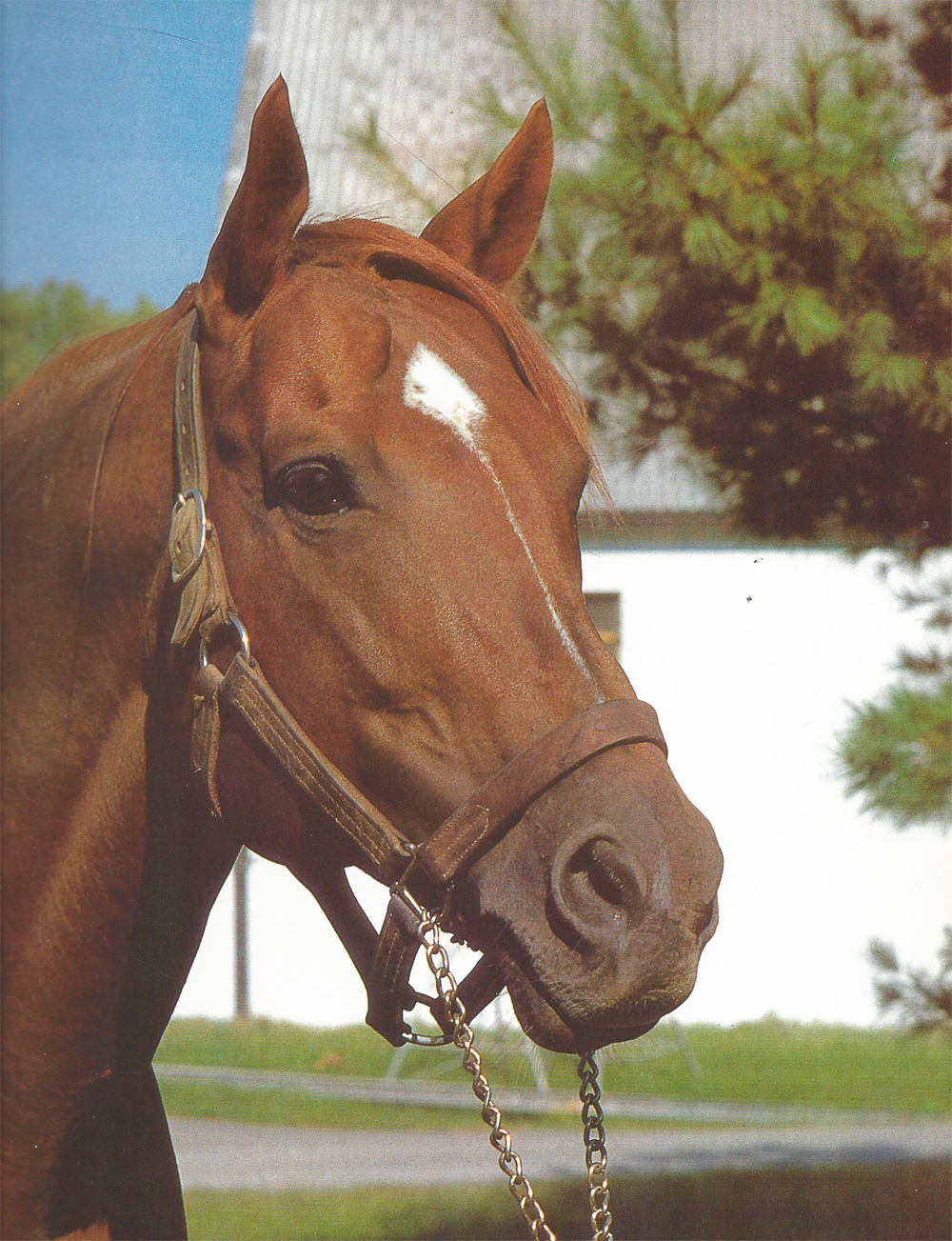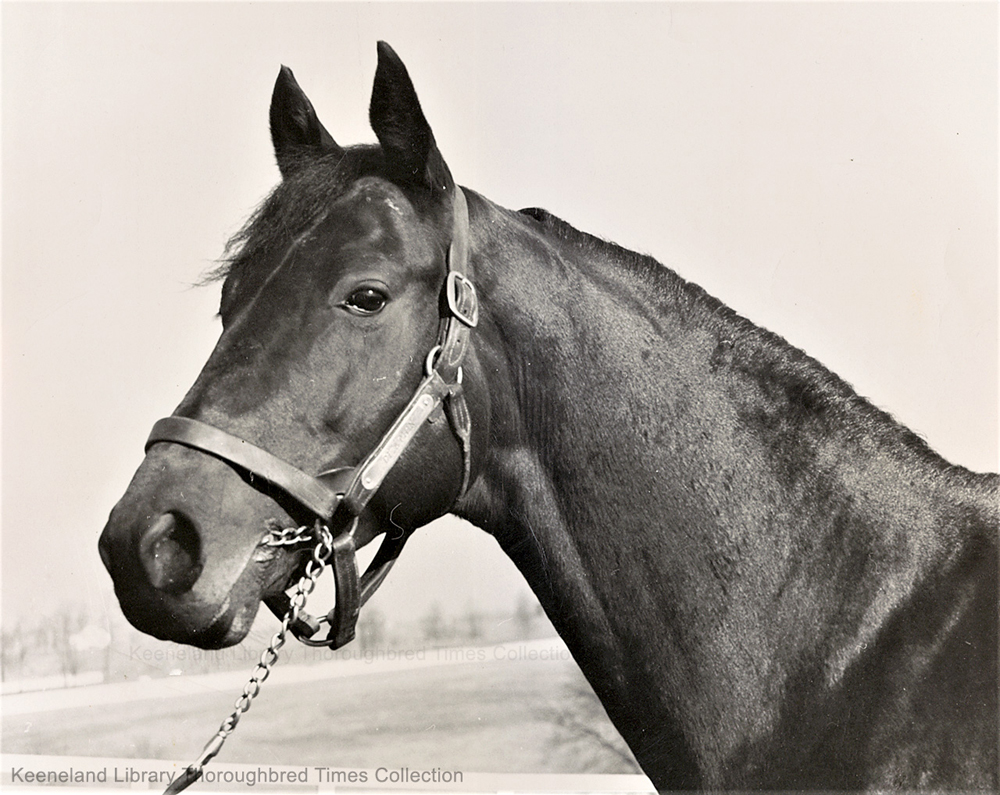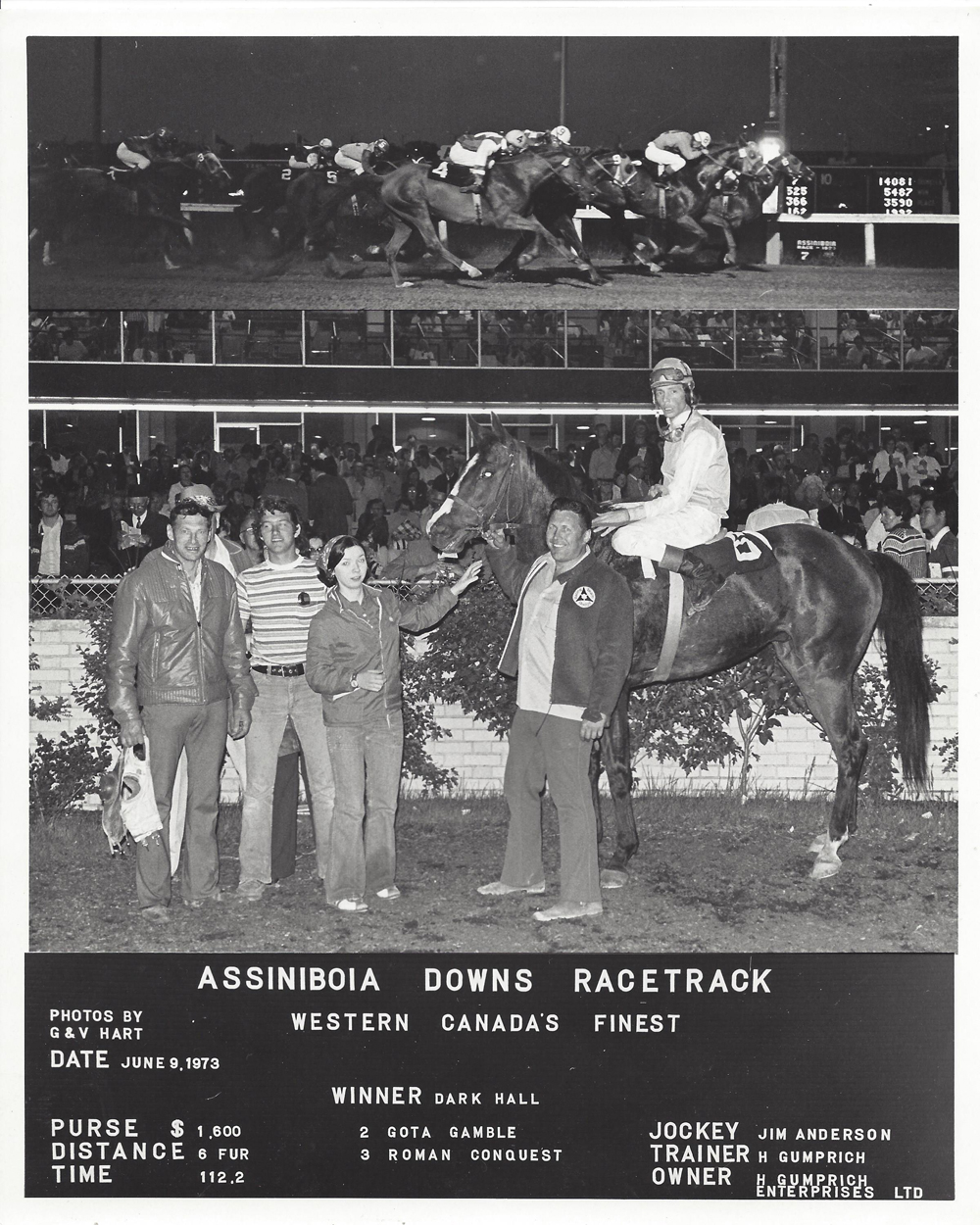
Secretariat. 1973 Triple Crown winner.
by Bob Gates
As the opening passage starts, “In the beginning…”
One of the greatest horses in the history of horse racing made his first start on July 4, 1972. In time he would become America’s horse, so how fitting is it that Secretariat would go to post on Independence Day. While it seems almost prophetic, it didn’t turn out all that well for the colt they called “Big Red.”
The handsome chestnut got “mugged” coming away from the gate and never fully recovered. Secretariat had completed his first official trip around a racing oval. He finished a credible fourth in the field of 12, but so much more awaited the 2-year-old. It would be the only time in his career that he finished out of money.
Before telling the rest of his story perhaps an explanation is in order. Normally these pages focus on the history of Assiniboia Downs or the early days of racing at River Park, Whittier Park, or Polo Park racetracks. But how do you let the 50th anniversary of one of the most iconic events in thoroughbred racing pass without some sort of acknowledgement?
As Mr. Ripley would say, “Believe it or not” June 9th marks one of the greatest anniversaries in the history of horse racing. If you will permit this slight divergence from our usual local historical articles, let’s revisit the mighty Secretariat’s Triple Crown performances five decades later.
There have been 13 Triple Crown winners spanning the almost 100-year period from 1919 to 2018. The 1930s featured three winners, the ‘40s had another four champions and then 25 years would pass before Secretariat’s achievement in 1973.
The ‘70s saw two others win the Kentucky Derby, Preakness and Belmont Stakes. To serve as a reminder as to the difficulties of the feat, it would be 37 more years before American Pharoah’s Triple Crown win in 2015. Why the digression? To show that winning the Derby, Preakness and Belmont isn’t and shouldn’t be easy!

Citation. 1948 Triple Crown winner. Keeneland Library photo.
Secretariat’s 1973 Triple Crown win came 25 years after Citation’s crown in 1948. Oddly enough both horses shared some history. The great sportswriter “Red” Smith offered:
“Both colts raced nine times as 2-year-olds and finished first eight times. At three, each lost once enroute to the Derby, Preakness, and Belmont. Both made each event in the Triple Crown easier than the last.”
Secretariat’s triumph in the May 5th Kentucky Derby was a classic. He was the first to run a sub two-minute Derby. He ran each quarter mile faster than the previous (25 1/5, 24, 23 4/5, 23 2/5 and 23) on his way to a track record 1:59 2/5 for the 1 1/4-mile distance. The budding 3-year-old finished 2½ lengths in front of second-place Sham.
Who knew: Remember the multiple graded stakes winner Forego? The eight-time Eclipse Award winner who was inducted to the Hall of Fame in 1979 finished 4th in the 1973 Derby.
Meanwhile, at 1973’s Assiniboia Downs, fans eagerly awaited the May 13th start of season #16. On that first Saturday in May, the Downs announced its racing officials for it’s 56-day thoroughbred season. Here’s a partial list of some of those names. How many do you recall? Craig Macdonald, Harry Jeffrey Sr. Bill Club, John Ragen, Nick Cizik, Ben Benjamin, Frank Roberts and Dr. Gordon Meek.
~ ~ ~
Two weeks after the Kentucky Derby, the 1973 Preakness Stakes was next on Secretariat’s dance card. The race proved to be a re-run of the Derby. Meadow Stables’ horse again won by 2 ½-lengths over Sham, with Our Native eight lengths back.
The top three finishers and the distance between the horses was the same as it was in Louisville. The only fly in the ointment was the time of the race. The Pimlico race time flashed 1:54 2/5. However, the “official” time was challenged by the Daily Racing Form, who clocked Secretariat in 1:53 2/5. A 39-year controversy ensued.
In June 2012, following a full forensic review of the videotape of the race by the Maryland Racing Commission, the official time was changed from 1:54 2/5 to 1:53, a new stakes record.
On Saturday May 19, 1973 at the Downs, jockey Bobbie Dimma was making history of his own. Dimma figured in seven of the eight carded races on Preakness Saturday, finishing the day with four wins, a second and two thirds. Not a bad day’s work!
~ ~ ~

At 1973’s Assiniboia Downs, the local hero of “Triple Crown” Saturday on June 9, was jockey Jimmy Anderson.
Secretariat’s Triple Crown journey took him to Belmont Park for the first Saturday in June. June 9, 1973 was the day Big Red cemented his name in racing’s history books.
You have to hand it to Sham. The twice-beaten colt could have taken the “easy” way out and ran for second-place money, but that just wouldn’t do. Sham went out and challenged the would-be Triple Crown champion “mano a mano.” Sadly, it didn’t end well for Sham, who tired from suicidal fractions (23 2/5, 46 1/5, 1:09 4/5, 1:34 1/5, 1:59 and 2:24) and finished last. The result was Secretariat’s record-breaking 31-length victory in a time of 2:24.
There are few words that adequately describe Big Red’s win that day. CBS television announcer “Chic” Anderson did well to come up with his iconic call:
“Secretariat is widening now! He is moving like a tremendous machine!”
We all won that day. The long 25-year wait was over! The coronation was complete, racing had its first Triple Crown champion since Citation in 1948.
At 1973’s Assiniboia Downs, the local hero of “Triple Crown” Saturday was jockey Jimmy Anderson. Anderson won three races and chalked up a third-place finish in the final race as dust from Secretariat’s historic run settled over all of North America.
~ ~ ~

By the numbers, Secretariat recorded 16 wins, three seconds, a third and $1,316,808 in earnings from 21 starts, but the chestnut colt was so much more.
The 1973 champion, whom many regard as the most talented thoroughbred racehorse in history, inspired a generation of followers and moved horse racing to the covers of Time, Newsweek and Sports Illustrated, and the front pages of newspapers everywhere.
The title of Lawrence Scanlan’s book says it perfectly, Secretariat was quite literally…
“The Horse God Built!”


